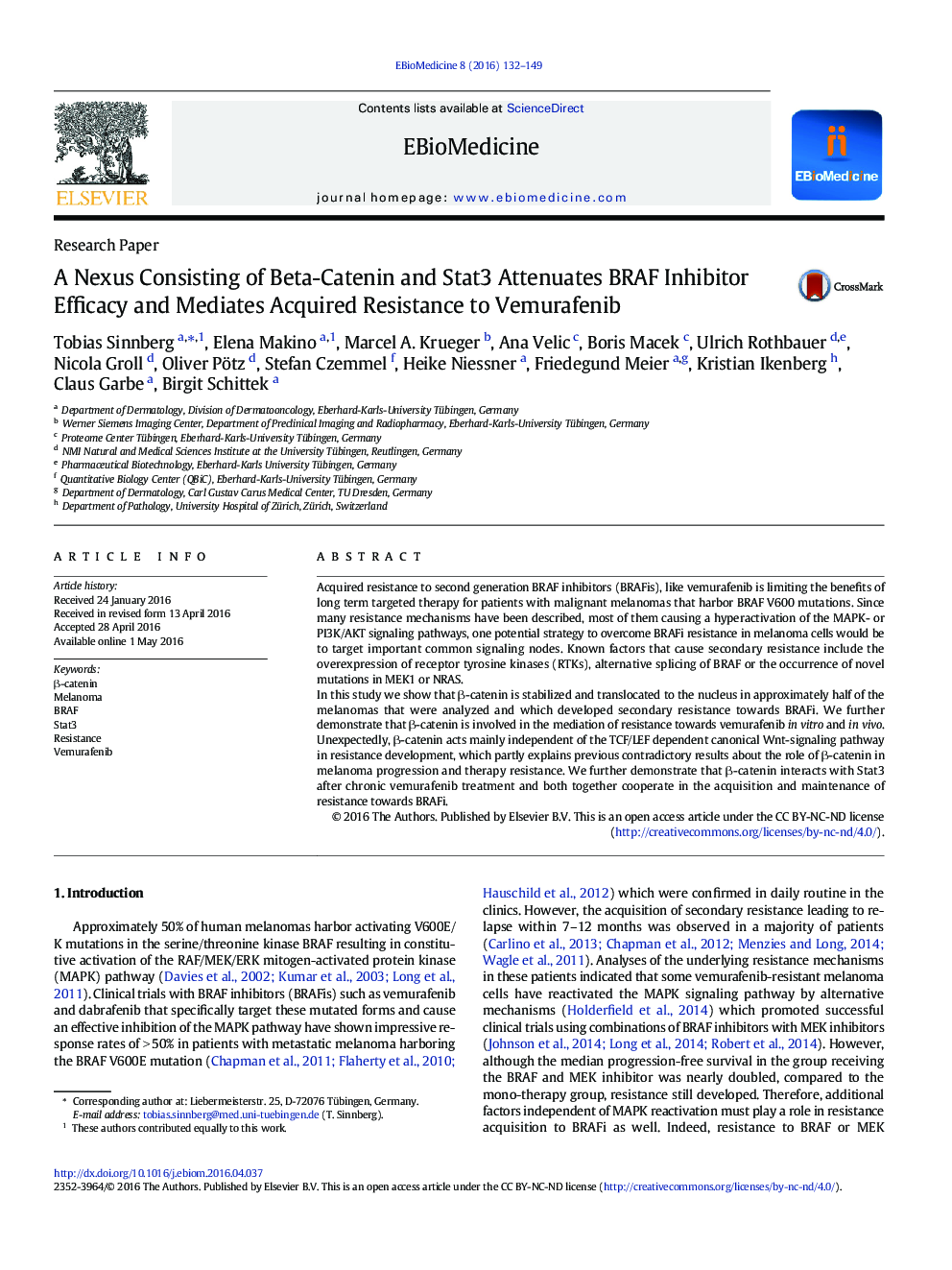| Article ID | Journal | Published Year | Pages | File Type |
|---|---|---|---|---|
| 2120759 | EBioMedicine | 2016 | 18 Pages |
•Melanoma cells with acquired resistance frequently express high amounts of β-catenin.•In these cells a hyper-activation of Stat3 co-occurs leading to an interaction with β-catenin.•Such BRAFi resistant melanoma cells are sensitive to knockdown of β-catenin and Stat3 or pharmacologic Stat3 inhibition.Treatment with BRAF inhibitors is the basis of the standard therapy for melanoma patients with BRAFV600 mutated metastases. Although this therapy achieves impressive short-term benefit, many patients suffer from relapse after several months of treatment even if the therapy is combined with MEK inhibitors. The development of therapy resistant tumor cells is a multifactorial transformation and several cellular mechanisms are already described. Here, we found an interaction of two well-known tumor-associated proteins, namely β-catenin and Stat3 in resistant metastatic melanoma cells. Patient data support that these proteins are involved in the resistance to BRAF inhibitor therapy.
Acquired resistance to second generation BRAF inhibitors (BRAFis), like vemurafenib is limiting the benefits of long term targeted therapy for patients with malignant melanomas that harbor BRAF V600 mutations. Since many resistance mechanisms have been described, most of them causing a hyperactivation of the MAPK- or PI3K/AKT signaling pathways, one potential strategy to overcome BRAFi resistance in melanoma cells would be to target important common signaling nodes. Known factors that cause secondary resistance include the overexpression of receptor tyrosine kinases (RTKs), alternative splicing of BRAF or the occurrence of novel mutations in MEK1 or NRAS.In this study we show that β-catenin is stabilized and translocated to the nucleus in approximately half of the melanomas that were analyzed and which developed secondary resistance towards BRAFi. We further demonstrate that β-catenin is involved in the mediation of resistance towards vemurafenib in vitro and in vivo. Unexpectedly, β-catenin acts mainly independent of the TCF/LEF dependent canonical Wnt-signaling pathway in resistance development, which partly explains previous contradictory results about the role of β-catenin in melanoma progression and therapy resistance. We further demonstrate that β-catenin interacts with Stat3 after chronic vemurafenib treatment and both together cooperate in the acquisition and maintenance of resistance towards BRAFi.
Graphical abstractScheme of the change of interacting proteins with β-catenin during the acquisition of resistance to BRAFi from TCF/LEF family members to novel interactants like Stat3. Binding of ligands to different receptor tyrosine kinases like c-met and Egfr family members activate the MAPK signaling pathway and PI3K signaling pathway independently of mutated BRAF. Additional MAPK signaling reactivating mechanisms like the acquisition of novel mutations (asterisk), the formation of Raf heterodimers to the BRAFi. In this environment a switch in the interaction partners of β-catenin to Stat3 occurs further enhancing resistance and contributing to the relapse of the tumor. Dotted lines indicated weak activating potential or indirect mechanisms.Figure optionsDownload full-size imageDownload as PowerPoint slide
